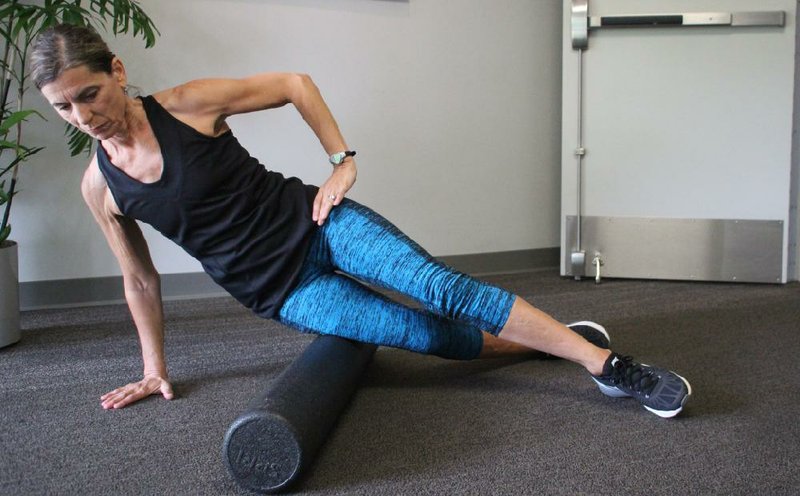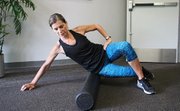Foam rolling has become commonplace in most fitness centers. As is often the case, foam rolling was first used in rehabilitation settings.
This week, I'll shed a little light on the benefits of foam rolling and present one of my favorite rolling movements.
To understand the benefits of foam rolling, we must first understand the body part it aims to help.
A fascia is a band of connective tissue composed of collagen designed to support and separate muscles from other structures within the body. A flexible sheath, fascia surrounds and contains muscles and helps them contract and relax -- sort of like a shock absorber.
Like any connective tissue, muscle fascia can become stiff and inflexible over time and through extensive use. An inflexible length of fascia can reduce the fluidity of movement and cause chronic soreness, so maintaining its pliability is a good idea. Enter the foam roller.
Foam rollers were originally used for dancers' self-massage, because they found that massage reduced soreness and improved the dancer's ability to recover from a long, difficult performance. Today, foam rollers are used for exactly the same purpose.
"Rolling," as it's sometimes called, helps to keep fascia flexible in much the same way that stretching improves muscle flexibility. It forces the connective tissue fibers into positions that challenge the status quo.
Rolling back and forth in slow, deliberate patterns also provides an opportunity to identify and address "trigger points" within a muscle fascia. When irritated, these little sore spots cause generalized musculoskeletal pain. They can be reduced or eliminated through rolling, particularly immediately after exercise.
Whether the goal is to reduce trigger points (never a bad idea) or to protect fascia flexibility, foam rolling is an easy, inexpensive approach. But it's not necessarily painless. I recommend starting with a softer foam roller (they come in varying degrees of stiffness) and roll the large muscle groups first. The hamstrings, quadriceps and calves are great places to begin, simply because the benefit can be realized quickly due to their everyday use.
The iliotibial band, for instance, is a thick length of fascia on the outside of the thigh attached to the outside of the pelvis and inserting just below the outside of the knee. The IT band's pliability plays an important role in knee stability because the band has to shift position during activities like running.
Here is a rolling motion for the IT band.
1. Select a long foam roller and lie on your right side, with the left side facing the ceiling. Place the foam roller perpendicular to your body and underneath your right leg.
2. With your hands on the floor for balance, slowly roll up and down the outside of your right leg, from your knee to the hip.
3. Roll for 30 to 45 seconds, then switch legs.
When using the foam roller, move very slowly and stop when you feel a sore spot. Roll back and forth across the sore spot until you feel some relief, then continue moving down the leg.
This is a nice way to end a workout, as it feels like a form of massage, but without the "being touched by a stranger" aspect. Ha! Enjoy!
Matt Parrott has a doctorate in education (sport studies) and a master's in kinesiology and is certified by the American College of Sports Medicine.
vballtop@aol.com
ActiveStyle on 05/30/2016

